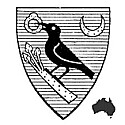"...a goodly, huge cabinet, wherein whatsoever the hand of man by exquisite art or engine has made rare in stuff, form or motion; whatsoever singularity, chance, and the shuffle of things hath produced; whatsoever Nature has wrought in things that want life and may be kept; shall be sorted and included." [Bacon]









 [click the images for full size versions]
[click the images for full size versions]It's little wonder that the drama and embellishment of the baroque aesthetic gave rise to a 17th century enthusiasm for the wunderkammer or 'cabinets of curiosity' that would eventually beget our modern museums. I was a little surprised in reading around at just how popular they were across Europe. Increased world travel and trade brought a variety of oddities back to the monied elite who would display them in order to demonstrate a deeper understanding of their changing world.
One such famous collector was Manfredo Settala (1600-1680) of Milan who Filippo Picinelli described as "the Archimedes of our century". Settala was from a noble family and had an opportunity to travel abroad early in life when his fascination for collecting all manner of unusual naturalistic, ethnological and artistic specimens began. He was also interested in science and became proficient in metalwork and the instruments he crafted on a lathe were added to his collection; which also included a huge library.
During the 1660s a catalogue of his 3000-odd specimens was commissioned and artistic contributions to the inventory were made by Domenico Tencala, Francisco Porro, Giovanni Battista, Francisco Volpino, Alfonso Coast, Carolo a Sole and Carolo Galluzio. The images here are from the 3rd volume (the first 2 are housed in the library at Modena) and depict vases, clocks, animals, skulls, jewellery, crockery, precious stones and crystals and the instruments made by Settala himself. Some of these latter objects were modified with for instance magnets (eg. the fish in the image above would spin) so as to increase their novelty value.
I've only skimmed the wide selection of online sources and hope I've understood the translations correctly - as always, buyer beware. I've retouched most of the above images to try to remove the watermarks.
- [nb. this link now dead; see asterisk below]
The 195 page Codex Settala is displayed online by Milan's Biblioteca Ambrosiana - I liked the flash format. (html version - click 'Sfoglia') [translation of explanatory notes]* There are illustrations on every page accompanied by what I'm assuming is Settala's own handwriting describing each object - I haven't added these notes above because the translations were a bit strange. - Update* (2012) As Andrea kindly points out in the comments below, the two volumes of Settala's manuscript are available (as .pdf) via the Estense Library in Modena.
- Manfredo Settala at the Storia di Milano website (translation).
- The history of scientific collections at the Università di Pavia (translation).
- Mathematical Wunderkammern by William Mueller [2.8Mb pdf] {html version}
- Images of European wunderkammer at the Cabinets de Curiosités website.
- Misteraitch's interesting post about ivory objects fashioned by or after Settala.



















4 comments :
I hadn’t seen these images before—many thanks for posting them.
hello
vols 1-2 of the museum's catalog are now online in pdf mid-res format:
http://bibliotecaestense.beniculturali.it/info/img/mss.html
hth
Thanks very much Andrea : I've added a note above.
you're very welcome. btw you gave me a smile. i didnt know the names of the artists, found this page while checking what i read in the manuscipt. Volpino means 'little fox' in italian, and if you take a look at fol. 86r, you'll see a fox in the lower margin. note that it was a dog then the high tail was corrected in a long, soft one :)
Post a Comment
Comments are all moderated so don't waste your time spamming: they will never show up.
If you include ANY links that aren't pertinent to the blog post or discussion they will be deleted and a rash will break out in your underwear.
Also: please play the ball and not the person.
Note: only a member of this blog may post a comment.